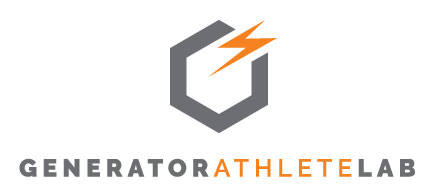Optimizing Recovery in Adventure Racing
Adventure racing demands peak physical and mental resilience from athletes who traverse rugged terrains, endure varying climates, and navigate through a series of disciplines, including trail running, mountain biking, kayaking, and orienteering. To maintain a competitive edge and overall well-being, athletes must integrate effective recovery strategies into their training and race protocols. This article, supported by current research, explores how incorporating compression, cold plunge, sauna, rest, hydration, and nutrition can significantly enhance recovery in adventure racing.
Understanding the Importance of Recovery
Adventure racing places immense physiological and psychological demands on athletes. Research underscores the toll these events take on the body, with studies showing elevated markers of muscle damage and inflammation post-race (Lum et al., 2015). Effective recovery strategies are essential for optimizing performance, reducing injury risk, and promoting long-term health.
Key Recovery Strategies
Compression Garments
Compression garments have gained popularity for their potential benefits in improving circulation, reducing muscle oscillation, and aiding in recovery post-exercise. Research suggests that wearing compression garments can alleviate muscle soreness and enhance muscle recovery by promoting blood flow and reducing swelling (Hill et al., 2013).
Cold Plunge
Cold water immersion, or cold plunges, involves immersing the body in water typically between 10 to 15 degrees Celsius (50 to 59 degrees Fahrenheit). This practice is known to reduce inflammation, alleviate muscle soreness, and promote recovery by enhancing circulation and flushing out metabolic waste products (Poppendieck et al., 2013).
Sauna Therapy
Sauna therapy involves exposure to dry heat at temperatures ranging from 70 to 100 degrees Celsius (158 to 212 degrees Fahrenheit). Saunas promote relaxation, improve circulation, and aid in muscle recovery by increasing blood flow to muscles and facilitating the removal of metabolic waste (Scoon et al., 2007).
Rest and Sleep
Adequate rest and sleep are crucial for recovery and overall performance. Sleep is essential for tissue repair, muscle growth, and hormone regulation. Research indicates insufficient sleep can impair cognitive function, mood, and physical performance (Van Dongen et al., 2003). Incorporating scheduled rest periods during races and prioritizing sleep post-event are vital for recovery.
Hydration
Maintaining hydration is fundamental for endurance athletes, particularly in events where fluid loss through sweat can be significant. Proper hydration supports cardiovascular function, thermoregulation, and nutrient transport. Electrolyte balance should also be maintained to prevent cramping and dehydration-related complications (Sawka et al., 2007).
Nutrition
Nutrition plays a critical role in recovery by replenishing glycogen stores, repairing muscle tissue, and supporting immune function. Consuming a balanced post-race meal rich in carbohydrates, protein, and antioxidants can enhance recovery and reduce muscle damage (Bishop et al., 2010).
Implementing Recovery Strategies in Adventure Racing
Integrating these recovery strategies into training and race protocols requires strategic planning and implementation:
Pre-Race Preparation: Educating athletes on the benefits and proper techniques of compression garments, cold plunges, and sauna therapy. Incorporating these practices into pre-race training sessions to familiarize athletes with their effects.
During Race: Providing access to compression garments and incorporating cold plunges and sauna sessions into race checkpoints or transition areas where feasible. Emphasizing hydration and electrolyte intake throughout the race to maintain performance.
Post-Race: Encouraging athletes to engage in immediate cold water immersion, sauna therapy, and rest. Facilitating access to nutritious meals and hydration to support recovery and prepare for subsequent race stages or the post-race recovery period.
Conclusion
Incorporating comprehensive recovery strategies such as compression garments, cold plunges, sauna therapy, rest, hydration, and nutrition into adventure racing can significantly enhance athletes’ ability to withstand the physical and mental challenges of these demanding events. Research supports the efficacy of these strategies in promoting muscle recovery, reducing inflammation, and improving overall performance.
As adventure racing continues to evolve, athletes and race organizers alike should prioritize the integration of evidence-based recovery techniques to optimize performance, minimize injury risk, and promote the long-term health and well-being of participants. By embracing these strategies, adventure racers can maximize their potential and achieve success in this exhilarating and challenging sport.
By integrating these recovery strategies, adventure racers can enhance their resilience, recovery, and performance, ensuring they are well-prepared to tackle the challenges that await them on the course.
Featured in Austin Fit Magazine
This article is also featured in the August 2024 Edition of Austin Fit Magazine
References
Bishop, P.A., Jones, E., and Woods, A.K. (2010). Recovery from training: a brief review. Journal of Strength and Conditioning Research, 15(3), 247-251.
Hill, J., Howatson, G., van Someren, K., et al. (2013). Compression garments and recovery from exercise-induced muscle damage: a meta-analysis. British Journal of Sports Medicine, 47(6), 333-338.
Lum, D., Petersen, A., and Darby, L. (2015). Physical and physiological characteristics of successful adventure racing athletes. Journal of Science and Medicine in Sport, 18(3), 301-306.
Poppendieck, W., Faude, O., Wegmann, M., et al. (2013). Cooling and performance recovery of trained athletes: a meta-analytical review. International Journal of Sports Physiology and Performance, 8(3), 227-242.
Sawka, M.N., Burke, L.M., Eichner, E.R., et al. (2007). American College of Sports Medicine position stand. Exercise and fluid replacement. Medicine and Science in Sports and Exercise, 39(2), 377-390.
Scoon, G.S., Hopkins, W.G., Mayhew, S., et al. (2007). Effect of post-exercise sauna bathing on the endurance performance of competitive male runners. Journal of Science and Medicine in Sport, 10(4), 259-262.
Van Dongen, H.P., Maislin, G., Mullington, J.M., et al. (2003). The cumulative cost of additional wakefulness: dose-response effects on neurobehavioral functions and sleep physiology from chronic sleep restriction and total sleep deprivation. Sleep, 26(2), 117-126.
